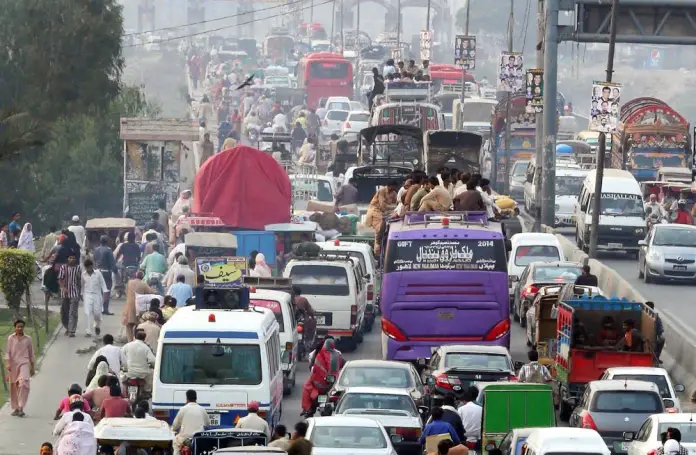Residents of many areas of Lahore have been forced to ‘endure’ rising noise pollution, as authorities are apparently least bothered about dealing with this growing nuisance, Minute Mirror has observed.
Amid the clear increase in noise pollution, no authority, including the Environmental Protection Agency (EPA), has paid heed to measuring the noise level in the city since 2012.
Several studies show that people living in areas of high noise pollution are often short tempered, while loud noises can cause various health problems. The effects of noise pollution on human mechanisms could be physiological and behavioural. The physiological effects of noise pollution may result in hearing loss or impairment.
According to the World Bank guidelines, the noise level must not exceed 55, 65, 75 and 50 decibel (dB) in residential, commercial, industrial and silence zones respectively in day time and 45, 55, 65 and 45 dB respectively at night.
The World Health Organisation (WHO) says that a noise level above 70 dB is painful and it may affect human health.
One can easily observe noises from vehicles standing at any spot in the city while greater intensity can be observed at Shimla Pahari, Railways Station, Badami Bagh, Chuburgi, Thokar Niaz Baig, Jail Road, Ferozepur Road, Mall Road and many other areas.
In 2013, in an effort to reduce the menace, Lahore’s Jail road was declared as a prime location for noise pollution due to a score of educational and medical facilities on it. However, this remained a mere announcement as authorities never measured the noise level on it, as the EPA does not have any record of the road.
Lahore is currently facing a high noise level in almost all areas. According to a recent study, the average noise level in Lahore caused by NESPAK during the construction work of Orange Metro Train, has risen above 80 dB, which is far higher than WHO and World Bank guidelines.
A senior official in NESPAK, seeking anonymity, told Minute Mirror that the reason for the increasing noise level in Lahore was just due to poor urban planning. “High rise buildings, unabated construction works and the vehicles above the capacity of city’s roads are the major factors that add to the noise pollution,” he said, adding that another reason for increasing noise in the city was excessive use of concrete by eliminating green areas. “In developed countries, high rise buildings located at the crowded roads use noise barriers to reduce the noise level,” he added.
Dr Syed Nihal Asghar, an environmental scientist, said that the major outdoor source of noise in Lahore is the transportation system, which includes sounds from motor vehicles, aircrafts and railways. “A significant increase in Lahore’s population has been observed in the last two decades, which was far higher than its capacity,” he said. “To accommodate such a large number of populations; this has become necessary to develop infrastructure at large scale,” he added.
Senior physician Dr Muhammad Rauf believes that high level of noise is making citizens mentally and physically sick. Talking to Minute Mirror, he said that the high noise may cause hypertension, tinnitus, loss of hearing, sleep disturbance and other displeasing effects.
Rauf added that stress and hypertension were the main causes of health problems, whereas tinnitus can lead to forgetfulness, severe depression and at times panic attacks.
Talking to Minute Mirror, spokesman EPA, Sajid Bashir said that the agency had been monitoring noise pollution in the past but with the advent of smog, it focused on measuring air pollution. He said that the EPA will start measuring noise pollution soon after the smog season ended.
To a question, he admitted that the EPA could not manage to record noise pollution after 2012.







